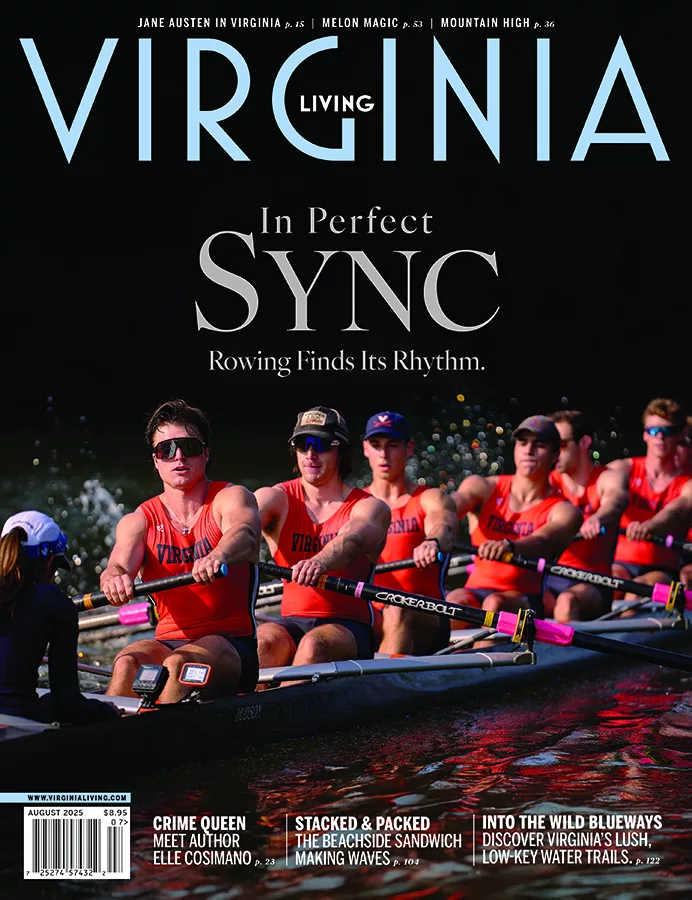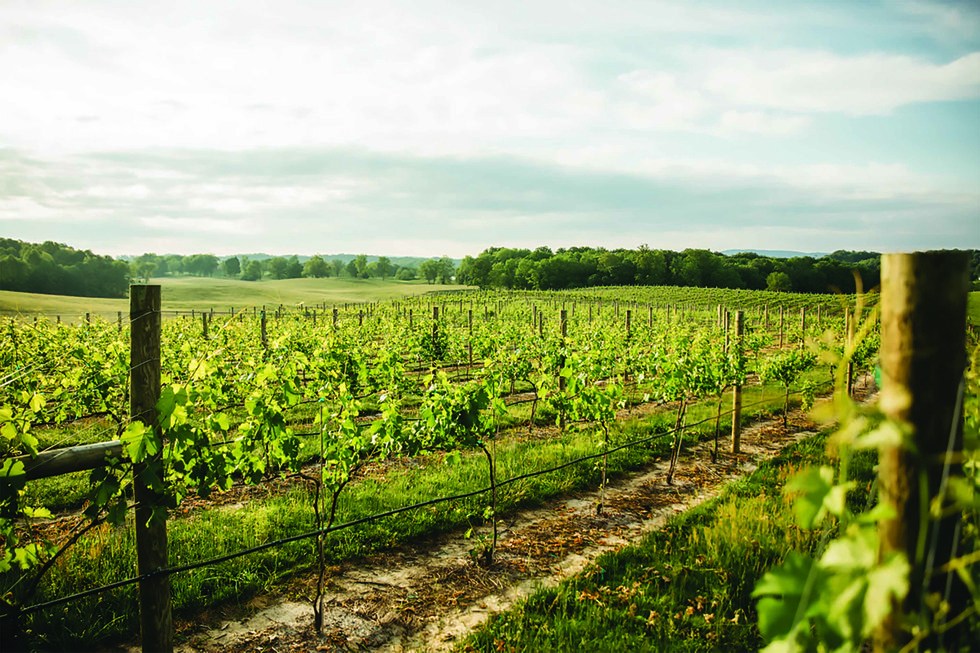You don’t wear boots with a ballgown. So why are you still drinking cabernet from a riesling glass?

“We’re not responsible for magic,” says Maximilian Riedel, the president and CEO of Riedel Crystal, at the beginning of a recent comparative wine tasting event. “We can’t make wine better or worse, but we can show it at its best.” By the end of the 90-minute session, however, the crowd of winemakers, restauranteurs, and enthusiasts did think Riedel was demonstrating a sort of wizardry with his glassware.
Riedel was in Richmond as part of his company’s regular outreach program to teach beverage professionals the benefits of using the proper glassware to serve various beverages. The focus is most often on wine, although Riedel Crystal also makes glasses for beer, cocktails, and specific spirits. As the first in the industry to introduce the varietal specific wine glass—Riedel’s grandfather worked with sommeliers to invent the concept—Riedel Crystal’s comparative tastings showcase the importance of glass specificity. “It’s not good enough to have a great chef and a great wine list,” explains Riedel. “You must serve the wine properly. … The glass is an instrument, a tool. Ours might not be the most beautiful, but they are the most functional.”

Photo by Mindy Kinsey
Riedel demonstrated the idea with a simple setup: He led the group through tasting three varieties of wine (chardonnay, cabernet sauvignon, and pinot noir), each poured into three different styles of glass (five glasses in total). Riedel described the glasses as “the good, the bad, and the ugly,” meaning that one design was perfect for the wine variety, while the others were unsuitable. In explaining the theory, Riedel likened the glassware to shoes, noting that even people who aren’t into fashion know that one pair of shoes doesn’t work for all occasions. The tasting perfectly proved his point.
In each case, Riedel encouraged the audience not just to swirl and sniff the wine, but to note how the wine flowed from the glass, the head position required to drink the glass, where the wine hit the palate, and whether the wine lingered on the tongue (and its scent in the glass) or dispelled quickly. A typically shaped white wine glass was deemed perfect for a subdued riesling but terrible for oaky chardonnays with their layers of flavor. Riedel watched his audience sigh in pleasure at a chardonnay tasted from the “good” glass and wince when it was sipped from the “ugly” vessel. As a general rule, he says, “Big wines need big glasses.”
The same is true for cabernet sauvignon, with its multitudes of fruit, yeast, oak, and tannins. Riedel Crystal’s cabernet glass is enormous, and made larger by the near-invisible folds worked into the design of the company’s new Performance line. Riedel himself invented the line (“I design glasses with input from winemakers, not by computer,” he says); the folds swirl the wine over more surface area, allowing it to aerate in the glass so the gases dispel and the fruit flavors shine. And sure enough, cabernet sipped from the specially designed glass didn’t just smell and taste better, it was silkier, with controlled tannins and a lingering finish. In the wrong glass the same wine lost its scent and became much more acidic.
Of all wine varieties, says Riedel, pinot noir benefits most from being served from the correct glass. It’s so important that Riedel Crystal has three versions of a pinot glass, designed to accommodate the minerality differences between Old World (European), New World (American), and New Zealand pinots. He demonstrated the New World glass, which incorporates the Performance wrinkles as well as a gently flared lip that Riedel called an “acidity bumper.” The design forces the drinker to slightly extend the tongue (Riedel referred to it as “French kissing the glass”) so the wine hits the tip of the tongue first, opening up the fruit and negating the acidity. The same wine was almost bland when drunk from the cabernet glass.
In an aside, Riedel noted that his cabernet and pinot noir glasses will hold a bottle of wine, but each serving should only be a couple of ounces, so the wine has room to move and breathe. “The perfect glass is probably double the size we usually see,” he says. “They aren’t large to annoy you or make you think the restaurant is being cheap with their pour. The size is needed to properly present modern wines, which are usually fruit-forward and have a higher alcohol content than traditional vintages.”
Discussing large glassware led to a demonstration of decanters. “Every wine benefits from aeration,” says Riedel, noting that the wine for the tasting had been opened three hours before the event began. He decants both reds and whites, and says it’s especially important to decant rosés. The decanter should be small to control the temperature of the wine, and decanters for white wine should be shaped to fit into an ice bucket. After pouring red wine from a decanter, Riedel showed off the wine’s slight foam cap, “a sign of perfect aeration.”
When asked how one should wash a decanter that has a very narrow opening, Riedel advised filling it with warm water and letting it sit overnight; this will also remove any stains from red wine. Empty the decanter in the morning and use a hairdryer to evaporate water and avoid spots. And polishing fine glassware? If you don’t have a professional grade dishwasher at home, use Riedel Crystal’s lint-free polishing cloths: With a cloth in each hand, hold the glass with one and polish with the other, starting with the stem and working up, and being very careful not to twist the stem off the bowl. Riedel notes the importance of keeping the cloths clean; drop them in boiling water rather than a washing machine, though.
In the end, Riedel didn’t just argue that using a well-designed glass creates nuance in wine akin to the difference between wool and cashmere; he demonstrated it. “The glass conveys the message of the wine to all of the senses,” he says. “The glass shape is responsible for the balance and harmony of flavors. Having the right tool, the right glass, shows wine at its best.”
Wondering which glass to pair with your wine? In addition to glasses named for varieties like cabernet, chardonnay, riesling, and pinot noir, Riedel Crystal offers dozens more designs.
Here are glass recommendations for a few varieties common in Virginia:
Meritage — Veritas Viognier/Chardonnay
Norton — Performance Syrah/Shiraz
Petit Verdot — Performance Cabernet
Rosé — Veritas Riesling/Zinfandel
Tannat — Wine Syrah/Shiraz or Veritas New World Shiraz
Viognier — Veritas Viognier/Chardonnay
To choose glassware for many more varieties of wine, as well as beer and spirits, visit Riedel.com.
For more on choosing the proper glassware, pick up a copy of our Drink 2019 issue.









